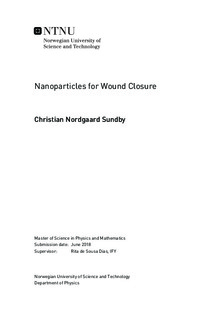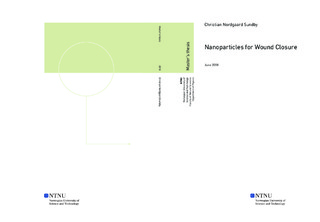| dc.description.abstract | Studies have shown the potential of the application of nanoparticles in wound closure. In some cases, the nanoparticles have shown to aggregate in the wound, delaying the natural healing processes, which involve cell migration, diffusion of growth factors, et cetera. In this work we study the effect of the presence of nanoparticles on the diffusion of biomolecules of two different sizes.
Method optimization was a large part of the work to assess the permeability of the interface covered with TM-50 silica particles, using PDMA hydrogel as medium. Gel electrophoresis was used to evaluate the migration of salmon sperm DNA (1,320 kg/mol) across the nanoparticle interface, while confocal laser scanning microscopy was used to observe the permeability of the nanoparticle interface to fluorescent Dextran molecules (4.4 kg/mol).
From the electrophoresis setup it was found that the presence of nanoparticles do hinder the transport of relatively large DNA molecules across an interface. When using confocal laser scanning microscopy it was found that the best setup was a gel-gel interface, whereas the gels were pre-swollen. This setup was also a better model for wound closure in vivo. It was found that nanoparticles do not significantly affect the diffusion of relatively small polysaccharides across an interface. | |

